
Savior Buddhas & their Texts
| Whoever copies or sponsors the
copying of this Aparimitayuh Sutra
will never be reborn in the hells, nor among animals, nor in the world
of Yama, nor in any of the places
of inopportune rebirth. ... |

| Whoever copies
or sponsors
the copying of this Aparimitayuh
Sutra will be followed everywhere by
the four celestial guardian kings,
who will ensure his or her protection. ... |

Whoever copies or sponsors the
copying of this Aparimitayuh Sutra
will be reborn in the Sukhavati
world
system, Buddha field of the Tathagata Amitabha. ...
|


| Whoever copies or sponsors the
copying of this Aparimitayuh Sutra
will never be reborn as a woman. (Experience of Buddhism,
196-7) |
|

Amitabha’s Pure Land
This notion of
“other-power” is further developed in
the Larger Sukhavati-vyuha (Larger Pure Land Sutra),
which was written
during the 2nd century CE. In this sutra, Sakyamuni recounts the
story of a king named Dharmakara who
becomes a monk and then makes forty-eight “bodhisattva
vows” that he
promises to fulfill before becoming a
Buddha. After an unfathomably long period of time, he does indeed
become a
Buddha — known as
“Amitayus”
(Infinite
Life)
or “Amitabha” (Infinite Light) — implying
that his vows
have been fulfilled. The overall thrust of his vows concern the
creation
of a Buddha-land that will provide a perfect environment for attaining
enlightenment:
I, Ananda, heard
the following from the Buddha, Shakyamuni. At one time Shakyamuni
was at the Jetavana garden in Shravasti.
As many as twelve hundred and fifty people assembled, and they
were especially eminent monks. They were all illustrious practitioners
known as arhats who had eliminated their delusions and were of great
renown. ... Then the Buddha Shakyamuni explained to the elder Shariputra: “To the
far west of this world (of delusion), beyond as many as ten trillion
buddha-worlds, there’s another world called Ultimate Bliss with a
buddha whose name is Amitabha, who is there even now teaching the
Dharma. Shariputra, do
you know why that buddha-world is called Ultimate Bliss? It is because
the people who live there never experience suffering; they are mantled
in multitude forms of happiness. For that reason it is called Ultimate
Bliss.
“Also, Shariputra, the world is
adorned with seven railings, with seven
rows of gauze curtains with little bells, and surrounded by seven rows
of trees. All are set with four
kinds of jewels, which adorn the world throughout. For that reason this
world is called Ultimate Bliss.
“Again, Shariputra, in that world
there are lotus ponds whose shores
are decorated with seven kinds of jewels. The ponds brim with waters
of eight good qualities and the floor of the ponds are lined with sand
of gold. The ponds
are surrounded by steps on their four sides made of gold, silver, lapis
lazuli, and crystal. Above are pavilions lavishly adorned with the
seven jewels of gold, silver, lapis lazuli, crystal, coral, red pearls,
and agate. There are lotuses blooming in the ponds, and
their flowers are as large as the wheel of a cart. The blue flowers
emit a blue light; the yellow flowers emit a yellow light; the red
flowers emit a red light; and the white flowers emit a white light.
Each of the lotus flowers glows, weaving an harmonic scene while
emitting a subtle fragrance. Shariputra, this land of Ultimate Bliss is
an ideal environment so that whatever one lays eyes upon will bring
about awakening. (jsri.jp...)

How does the Pure Land compare with Abrahamic conceptions of Heaven?
Why do you think the description of the Pure Land is so detailed? |

The Forty-Eight Vows
Among the forty-eight
vows that Amitabha promised to fulfill before becoming a Buddha, two are
particularly
significant:
11. I shall not attain supreme enlightenment if any sentient being in
my
land would not certainly achieve supreme enlightenment and realize
great
nirvana.
18. When I realize supreme enlightenment, there
will
be sentient beings in other Buddha-lands who, after hearing my name,
dedicate
their good roots to birth in my land in thought after thought. Even
if they have only ten such thoughts, they will be born in my land ... (A
Treasury
of Mahayana Sutras, 342-3)
|
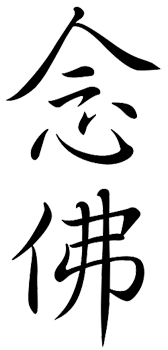
|
Nianfo/Nembutsu
The Eleventh vow is important because it assures the faithful that Amitabha did create a Pure Land in which enlightenment is guaranteed.
The Eighteenth vow, on the other hand, indicates the means by which rebirth
in the Pure Land may be attained — though there are at least three
significantly
different ways that the Sanskrit term buddhanusmrti (Chinese: nianfo, Japanese: nembutsu) can be interpreted:
| I. Since the term buddhanusmrti literally means “mindfulness of the Buddha,” the strictest practices involve a focused contemplation (samadhi)
of Amitabha, such as the 90-day “constantly walking” meditation practiced in the Tiantai tradition. From the Tiantai perspective, the goal of this practice was to visualize oneself as Amitabha in order to experience this
world as the Pure Land — which is to say that samsara is in fact
nirvana when seen from an enlightened perspective (a universally
accepted principle of Mahayana Buddhism). |

| II. A second approach is to continually repeat Amitabha Buddha’s name in an
attempt to experience a visualization of Amitabha in the Pure Land
(known as nembutsu samadhi in Japanese). Honen (1133-1212), the founder of the Japanese Pure Land tradition, is said to have experienced nembutsu samadhi
several times between 1198 and 1206. This may be thought of as the kind
of pure thought that is required to guarantee rebirth in the Pure Land. |

| III. A third approach is based on the Chinese translation of the term buddhanusmrti as nianfo (Japanese: nembutsu), which can mean both “mindfulness of the Buddha” and “recitation the Buddha’s name”.
The latter interpretation became standard in East Asia, leading to the
belief that one could attain rebirth in the Pure Land by simply
reciting the mantra “I take refuge in Amitabha
Buddha” (namo
amituofo in Chinese or namu amida butsu in Japanese). In the Japanese Jodo Shinshu tradition (the most popular branch of Buddhism in Japan), the “faith”
element is pushed to the extreme by claiming that one’s salvation is
assured the moment one sincerely believes in Amitabha’s 18th vow (i.e.
the promise that those who recite his name will be reborn in the Pure
Land). |
|


In contrast
to the Japanese tradition, the Chinese Pure Land tradition merged with
Chan Buddhism during the Ming dynasty (1368-1644) resulting in a
combination of “self power” and “other
power” in most forms of Chinese Buddhism. In other words, one conscientiously works towards
awakening through meditation and study, while also engaging in
faith-based practices, such as reciting the name of Amitabha,
chanting Buddhist sutras, and worshiping images of Buddhas and
Bodhisattvas. Although these two approaches may appear contradictory,
both lead to the dissolution of the ego — the key to attaining nirvana
— by either realizing the “egoless” principle of interconnectedness
through one’s own efforts or opening oneself up to the transforming
power of buddhas and bodhisattvas by relinquishing the power to determine one’s own destiny through one’s own actions.

|

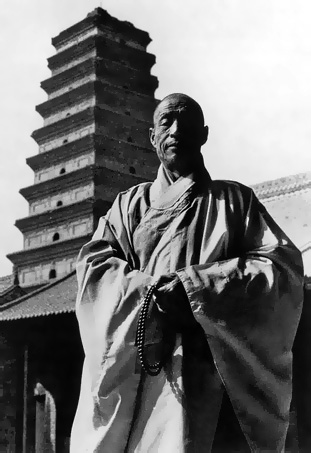 |
Before
Hsu-tung moved to China’s most famous Pure Land temple, he had been the
abbot of Tamaopeng Hermitage, the most renowned Zen temple in the
Chungnan Mountains. I asked him about the difference between Zen and Pure Land practice.
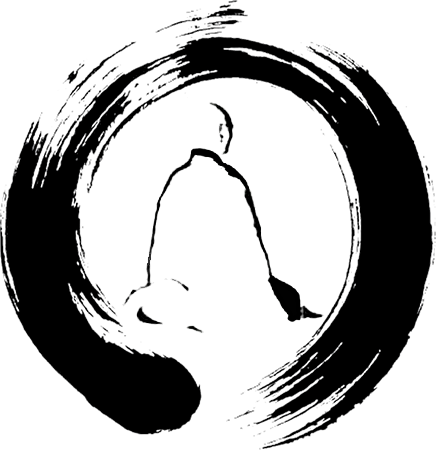
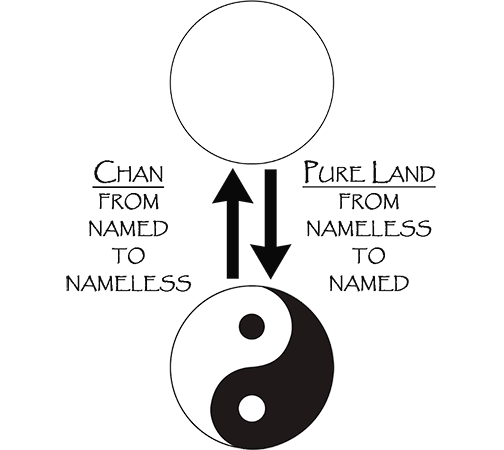
|

How
would you compare this relationship between "self power" and "other
power" with
the "faith" and "works" paradigm that we
explored in Judaism, Christianity and Islam?
|
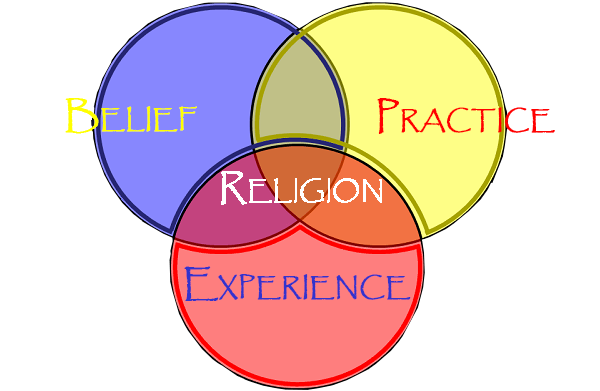
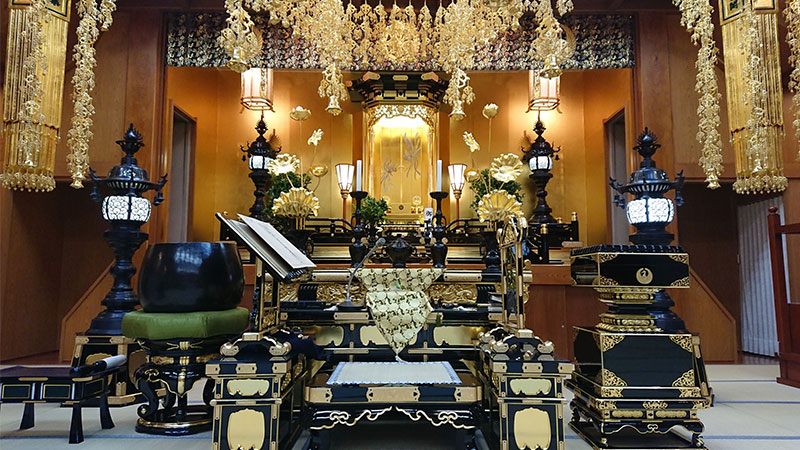
|
Nichiren Buddhism & Soka GakkaiA Japanese Fusion of Self Power & Other Power

Myogyoji (Nichiren) Temple
Soka Gakkai International ~ Chicago

|









